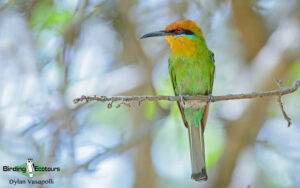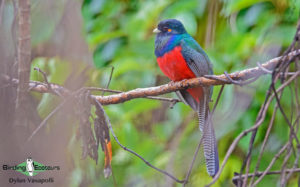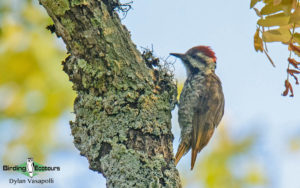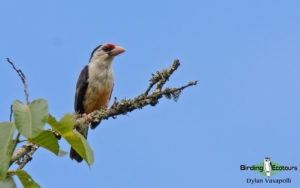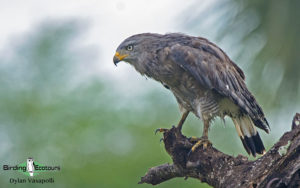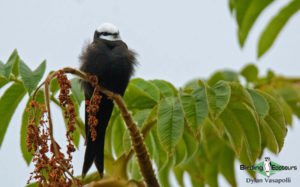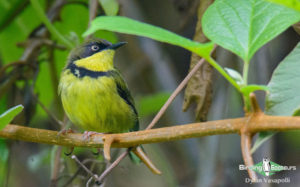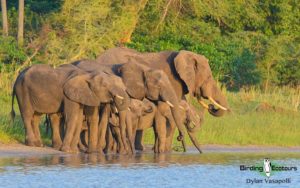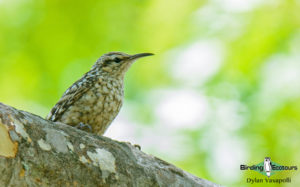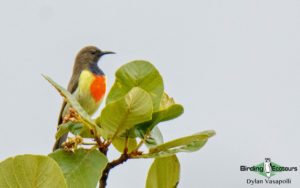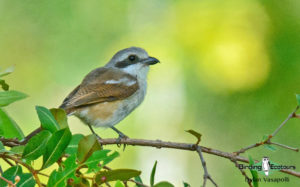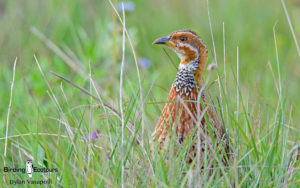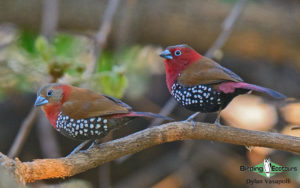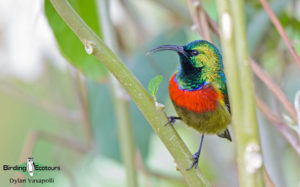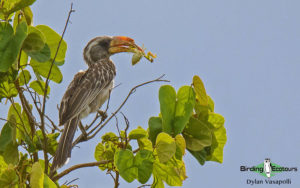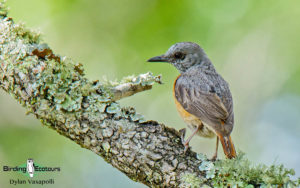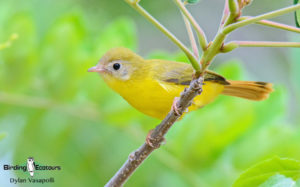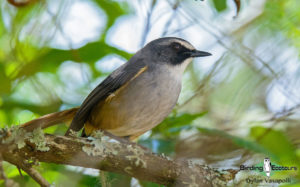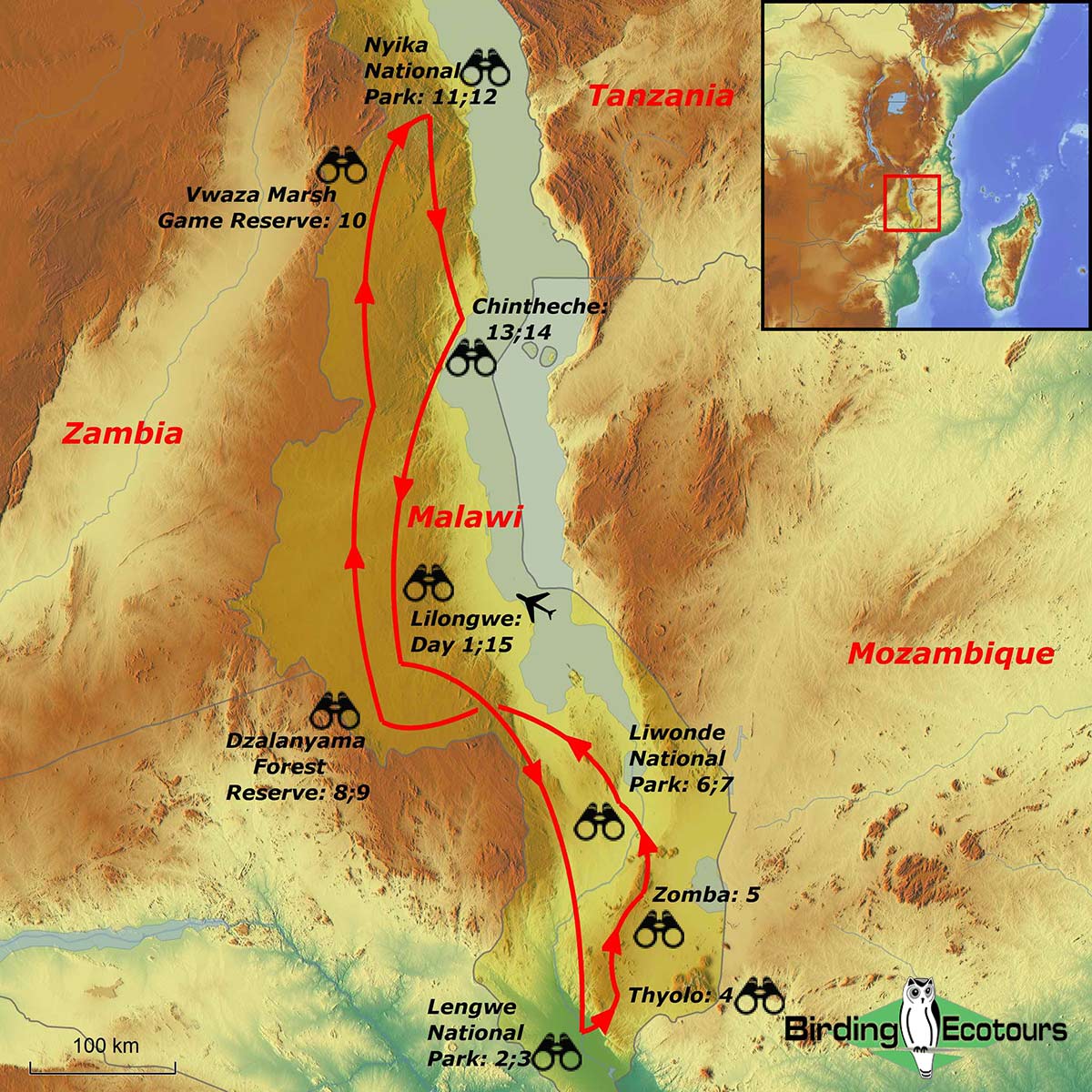Complete Malawi: Birding the Warm Heart of Africa
Complete Malawi: Birding the Warm Heart of Africa
November 2025/ 2026/ 2027
Malawi, a small country in southeast Africa rarely visited by tourists, is an absolutely amazing destination for birders. Its numerous national parks and protected areas are brimming with avian riches, and the beautiful Lake Malawi adds a different mix of birds to the enjoyment. Malawi has some of the finest patches of miombo woodland anywhere in Africa, and also hosts a number of highly localized forest birds, that only occur in this remote area of neighboring northern Mozambique, southern Tanzania and Malawi. A number of these miombo species are almost impossible outside of Malawi and thus the country arguably offers some of the best birding anywhere in south-central Africa. Our comprehensive tour covers the length of Malawi, taking in all the necessary and key localities needed to ensure we have a chance of finding all the country’s many specials. Although this tour is specially designed to target the special birds found here, visiting various national parks along the way means we’re also exposed to another of Africa’s core attractions – its megafauna – of which such characteristic species as African Elephant and Hippopotamus should all be seen!
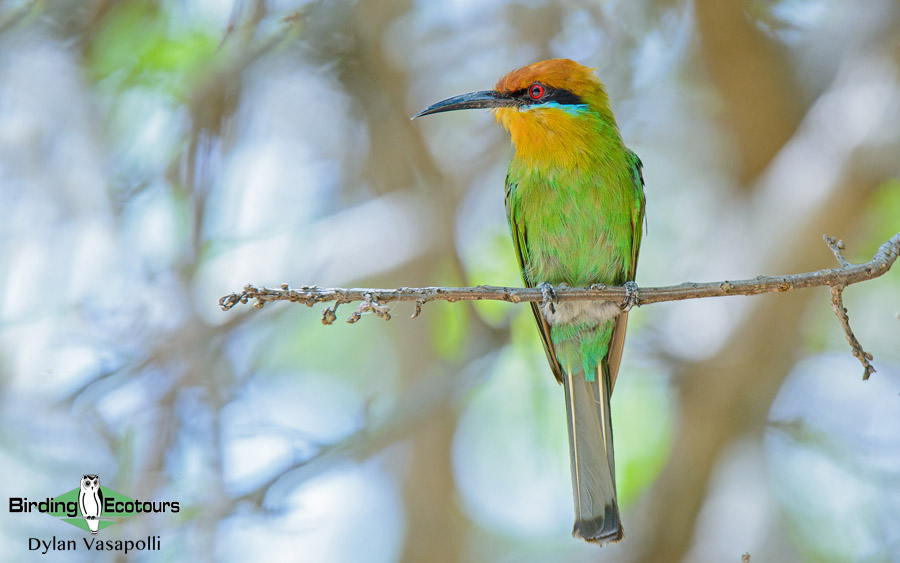
This tour begins and ends in Malawi’s capital city, Lilongwe. After our arrival, we venture southwards and explore the remnant tracts of montane forest atop the Zomba massif. Here a number of highly localized species await, including Malawi’s only endemic bird – Yellow-throated Apalis, along with the rare Thyolo Alethe and the stunning White-winged Apalis. The lush lowlands of the Shire River Valley follow next as we explore the excellent Liwonde National Park, gradually working our way northwards. Our bird and mammal list will grow rapidly here, where top specials such as Pel’s Fishing Owl and Lilian’s Lovebird await. What is arguably the best miombo woodland birding anywhere in the world follows – in the Dzalanyama Forest Reserve. This unique woodland is localized in south-central Africa and supports a whole host of species virtually confined to this habitat such as the highly localized Stierling’s Woodpecker, African Spotted Creeper, Yellow-bellied Hyliota and Souza’s Shrike.
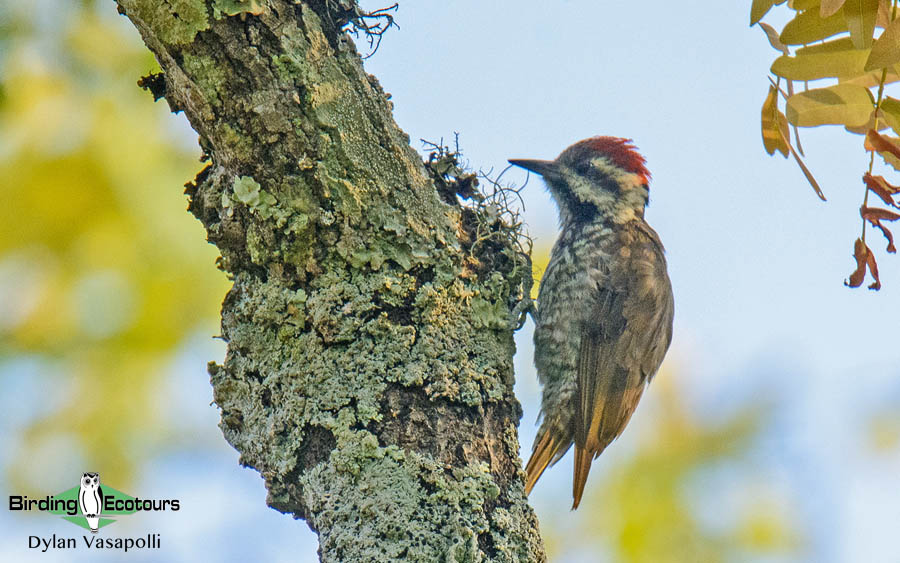
We head northwards more rapidly now, transiting to the breath-taking Nyika National Park located in the very north of the country. We make a few key stops en-route, first on the Viphya Plateau followed by the Vwaza Marsh Wildlife Reserve – both key sites with specials birds, such as the strange Babbling Starling (which is almost impossible to see outside of this site), perfectly located to break up our journey. We have a few days to explore and take in the incredible surrounds, vistas and birds that await us in Nyika National Park – which is without a doubt one of Africa’s best-kept secrets and one of our guides’ favorite locations anywhere on the continent. A wide array of species are possible here, and we’ll search for highly localized birds such as Sharpe’s Akalat, and Scarlet-tufted Sunbird, as well as other highly prized species such as Bar-tailed Trogon, White-headed Saw-wing and Blue Swallow. We end this tour on the shores of Lake Malawi, which is one of the most scenic and picturesque of the East African Rift Valley lakes.
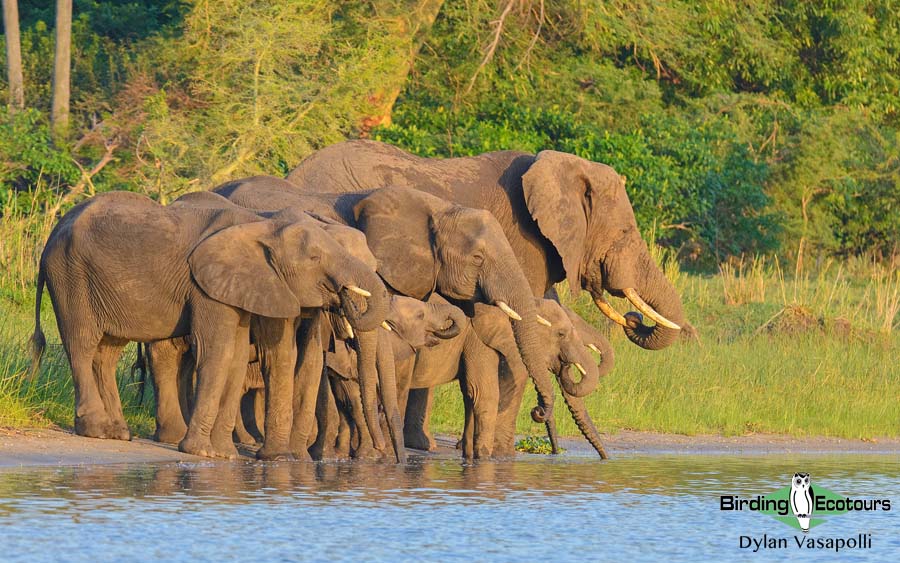
This tour can be combined with our exciting Zimbabwe: African Pitta, Miombo Woodlands and Eastern Highlands Birding Tour which follows this Malawi birding tour. Here we focus our time on our core target finding the near-mythical African Pitta – one of Africa’s most prized birds – as well as the many special birds unique to the Eastern Highlands of Zimbabwe.
Itinerary (15 days/14 nights)
Day 1. Arrival in Lilongwe
Today is set aside as an arrival day – and you are welcome to arrive into Lilongwe, the capital city, at your leisure, following which we’ll transfer to our comfortable lodge on the outskirts of the city. Should we have time available, we will undertake an afternoon birding excursion either in the area around the lodge, or to the nearby Lilongwe Wildlife Sanctuary. Both areas offer a similar suite of species, including some prized birds. Rivers and streams support denizens such as African Finfoot and Half-collared Kingfisher, although African Black Duck and Mountain Wagtail are more regularly seen. White-backed Night Heron also occurs, but this is best sought when we visit Liwonde National Park later on the trip (Day 4/5). The denser riverine trees and bushes support specials such as Schalow’s Turaco, Black-throated Wattle-eye and Red-throated Twinspot, amongst many other more widespread species. African Broadbill can also sometimes be found here, but is again easier elsewhere on the trip. The birding is assured to get this tour off to a fantastic start.
Overnight: Kumbali Country Lodge, Lilongwe
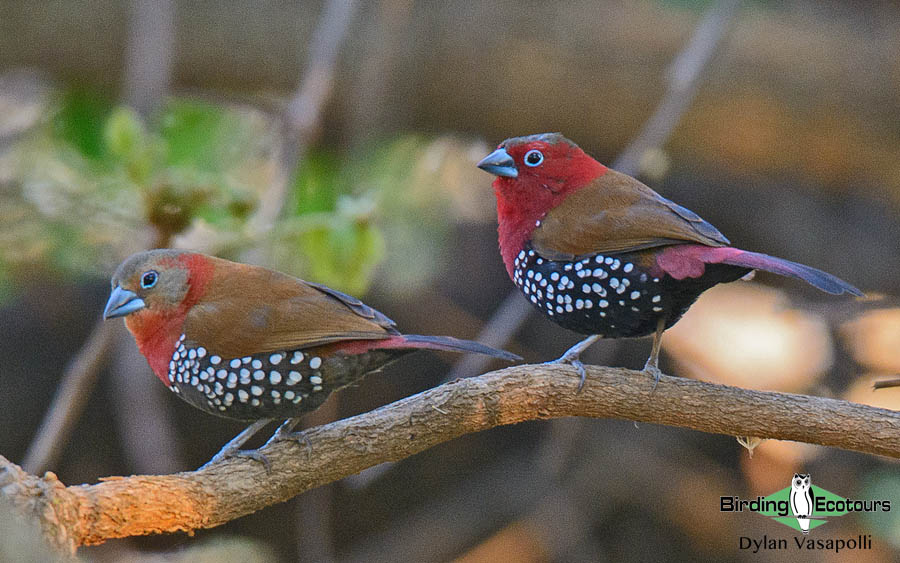
Days 2 – 3. Birding Zomba Mountain
We will have a final morning to explore either the surrounds of our lodge, or the Lilongwe Wildlife Sanctuary, searching for those targets mentioned above (Day 1). In addition, we should also be able to get a head start on a number of woodland species, which might include the likes of African Green Pigeon, Woodland Kingfisher, Yellow-fronted Tinkerbird, Black Cuckooshrike, Flappet Lark, Green-capped Eremomela, Violet-backed Starling, Ashy Flycatcher, White-browed Robin-Chat, Scarlet-chested Sunbird, Southern Citril and Golden-breasted Bunting. Following our morning here, we will transit southwards to Zomba, the old capital, and transfer up the mountain that looms above the town. Here we will base ourselves at a comfortable lodge with stunning views of the plains below, for two nights, as we go about exploring the area.
Our core focus will be in the remnant pockets of montane forest that exist on the plateau – much of which has been cut down unfortunately, as has happened with other sites in the country, such as the forests around Thyolo. These small pockets however, still support a wealth of birdlife and importantly still support some of Malawi’s most prized birds. Foremost amongst those is the Thyolo Alethe – a shy forest robin that requires stealth and patience to see. Malawi’s only endemic bird, the Yellow-throated Apalis is another primary target and is typically more easily sought on the forest edges. Noisy Livingstone’s Turacos and Olive-headed Greenbuls are a regular sight in the canopy, with Long-crested Eagle and White-eared Barbet preferring exposed branches above the canopy. The forest interior supports a greater number of species and here we’ll search for a wide range of species such as the unique dimorpha subspecies of Cape Batis, Black-throated Wattle-eye, Common Square-tailed Drongo, White-tailed Crested Flycatcher, Little and Placid Greenbuls, Yellow-throated Woodland Warbler, Black-headed Apalis, Orange Ground Thrush, White-starred Robin, Dark-backed Weaver, Green Twinspot and Red-faced Crimsonwing.
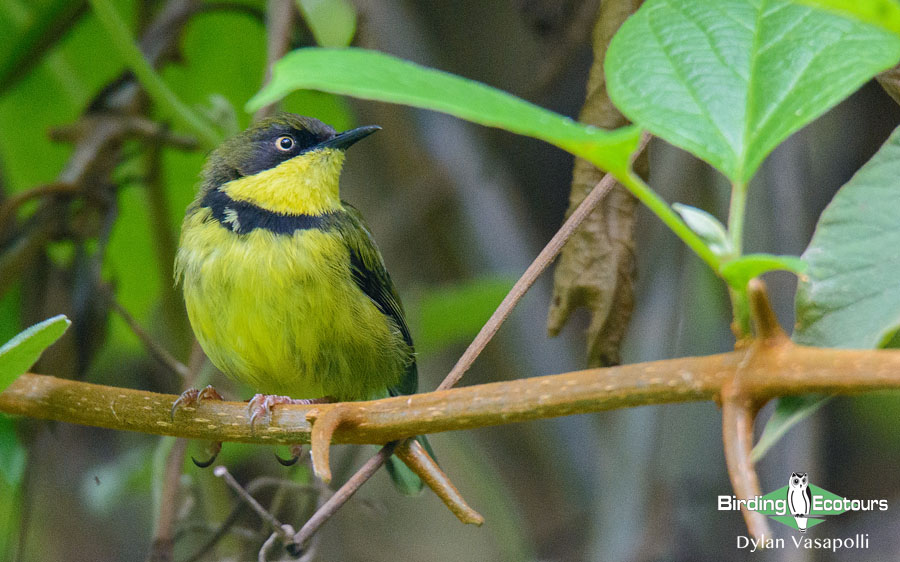
Denser thickets found along the streams running through the area support the likes of the vocal Evergreen Forest Warbler (although this skulking species is not easily seen) and the stunning White-winged Apalis – often referred to as the most beautiful ‘warbler’ in Africa! Sunbirds abound throughout the area, with Forest Double-collared, Olive and Collared Sunbirds all commonly seen. Small areas of open lands exist on the plateau and hold further species such as Red-necked and Hildebrant’s Spurfowls, African Yellow Warbler, Singing and Wailing Cisticolas, the scarce Bertram’s Weaver, Black-winged Red Bishop, Red-collared Widowbird, Yellow-bellied Waxbill and African Firefinch. Rocky areas will be searched for the likes of Striped Pipit, and while the dams and streams don’t have a wealth of waterbirds, Mountain Wagtail is often present. We will need to keep our eyes to the sky as raptors such as Augur Buzzard, Black Sparrowhawk, along with aerial feeders such as Scarce and Mottled Swifts can be readily sought here.
Overnight: Sunbird Ku Chawe Hotel
Days 4 – 5. Liwonde National Park
We have a final morning available on Zomba Mountain to try and find any species that we may still be searching for – which might include the tricky and difficult to see Thyolo Alethe, along with White-winged Apalis, before transferring to our next destination – Liwonde National Park. This is a short transfer of under two hours, from where we will call in at the very comfortable Mvuu Camp, set beautifully overlooking the Shire River, where we will be staying for two nights.
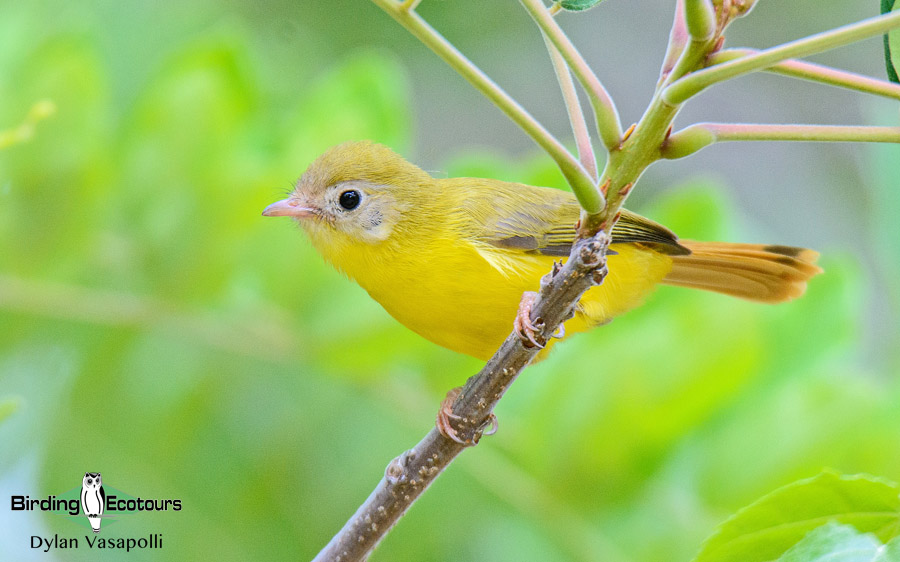
Liwonde National Park is a very biodiverse area, supporting a wealth of birdlife and a wide range of Africa’s megafauna. Our time here will be spent exploring the park with a mix of game drives, boat cruises and bush walks, and while the birds and birding will be our main focus, we’ll also keep an eye out for all of Africa’s megafauna and certainly won’t be ignoring them. Indeed, we find that while looking for birds, we come across a wide range of mammals in the process. Although our bird list will grow handsomely here with a wide range of species possible, there are various target species we’ll be specifically looking for. The riverine woodlands hold the sought-after Pel’s Fishing Owl, Green Malkoha, Brown-breasted Barbet, Böhm’s Bee-eater, Livingstone’s Flycatcher and Collared Palm Thrush, with Lilian’s Lovebird being more widely distributed throughout the wooded areas of the park.
White-backed Night Heron is another important target here, occurring in the over-hanging river vegetation. Dickinson’s Kestrel is best sought in the open lala palm savannah on the edges of the floodplains, while Racket-tailed Roller, Speckle-throated Woodpecker and Arnot’s Chat are best sought in the vast mopane woodlands further away from the river. A wide array of waterbirds can be found here, with numbers and species varying depending on the water levels of the Shire River. Some of the more important species we’ll be searching for include African Skimmer, Saddle-billed Stork, Spur-winged Lapwing and in the adjoining reedbeds, Southern Brown-throated Weaver. Liwonde is a great place for raptors – we stand a good chance of seeing a number of different species, such as Palm-nut Vulture, African Cuckoo-Hawk, Western Banded Snake Eagle, Bateleur and African Hawk-Eagle. Owls are likewise well represented, and we stand good chances at finding African Barred Owlet, African Wood Owl and Verreaux’s Eagle-Owl, in addition to the prized Pel’s Fishing Owl. This is a list highlighting only our ‘main targets’ at Liwonde – we’re assured to see many other birds whilst attempting to find these above-mentioned species.
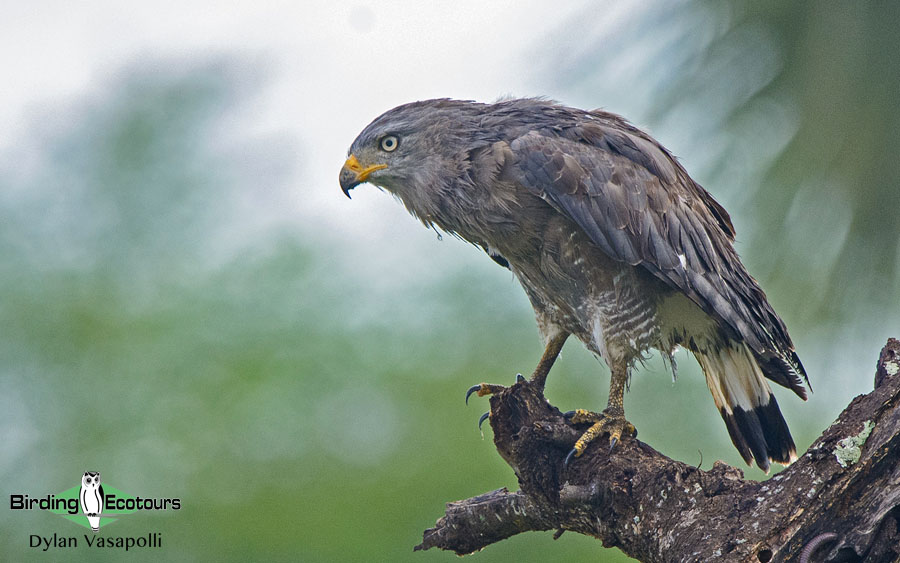
Shifting our attention to the other wildlife possible here – The ‘Big 5’ do occur (African Elephant, African Buffalo, Lion, Leopard and Rhino), although some of them such as Lion and Leopard are rarely seen. African Elephant, African Buffalo and Hippopotamus abound and are easy to see. A wide array of plains game, such as Plains Zebra, Waterbuck, Greater Kudu and Common Warthog can also be seen. The park is also a great area to find the stunning Sable Antelope. African Parks has been actively involved in reintroducing game to Liwonde, and it has been very successful so far in reestablishing populations of Lion and Cheetah, and helped to bolster the population of Black Rhino found in the reserve. Nile Crocodile, including some very large individuals, can be readily found in the Shire River.
Overnight: Mvuu Camp, Liwonde National Park
Days 6 – 7. Birding Dzalanyama Forest Reserve
We have a final morning available for one last activity at Liwonde National Park, and may opt for a birding walk or boat cruise, depending on what species may still be eluding us. Following which, we’ll transfer to the Dzalanyama Forest Reserve, via Lilongwe – this is a roughly five-hour drive. We anticipate arriving in the mid-afternoon, from where we’ll check into our rustic, yet comfortable lodge, located in the heart of the reserve. We have two nights based here as we set about covering various locations in the area – most of our birding will be on foot allowing us to cover the area at our leisure. Set on the Mozambican border, the Dzalanyama Forest Reserve protects some of the finest patches of miombo woodland anywhere in Africa. Indeed, the stunning rocky hillsides blanketed in this visually appealing woodland make birding in this area a pleasure, and it is a firm favorite amongst our guides.
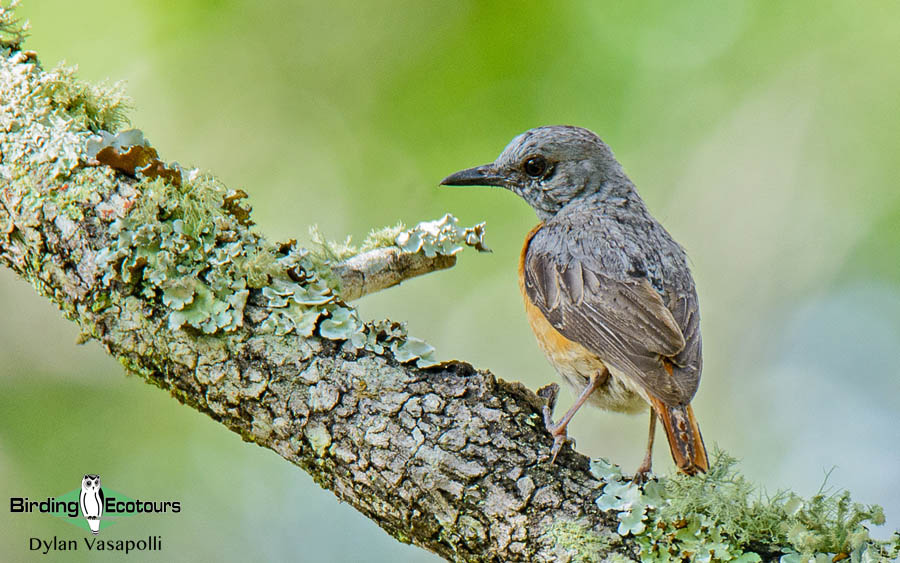
Miombo woodland is a unique woodland dominated by brachystegia tree species, and supports a very specific suite of birds, virtually restricted to this woodland – many of which have ‘miombo’ in their name. The birding here is very exciting, with the birds often occurring in ‘feeding parties’, and after finding one, the birds come in thick and fast. Dzalanyama is one of the best places anywhere for the localized Stierling’s Woodpecker, and this will be one of our main targets. Whilst traversing the woodlands, we will be trying for many other miombo specials, such as Pale-billed Hornbill, Whyte’s and Miombo Pied Barbets, White-breasted Cuckooshrike, Souza’s Shrike, Rufous-bellied and Miombo Tits, Red-capped Crombec, Yellow-bellied and Southern Hyliotas, the prized African Spotted Creeper, Miombo Blue-eared Starling, Miombo Scrub Robin, the inconspicuous Böhm’s Flycatcher, Miombo Rock Thrush, the stunning Anchieta’s and Western Violet-backed Sunbirds, Wood Pipit, Reichard’s and Black-eared Seedeaters and Cabanis’s Bunting. The rocky hillsides support small numbers of Boulder Chat – another very special bird, that is otherwise largely restricted to Zimbabwe. The incredible Pennant-winged Nightjar can occasionally be found in these woodlands as well – sometimes we find them at their day roosts. Rarely seen species that we’ll keep an eye out for include Shelley’s Sunbird and Olive-headed Weaver – however, we’ll need a good dose of luck to find either of these birds. Small wetlands (known as dambos) found within the woodlands are home to another major target – the difficult Lesser Seedcracker. Whilst searching for the seedcracker, we’re also likely to find other species such as Fan-tailed Grassbird, Short-winged Cisticola, Red-winged Prinia (Warbler), Yellow-mantled Widowbird and Orange-breasted Waxbill. Denser stands of riverine thickets and woodlands support further specials such as the beautiful White-tailed Blue Flycatcher and the tricky Grey-olive Greenbul.
Overnight: Dzalanyama Forest Lodge
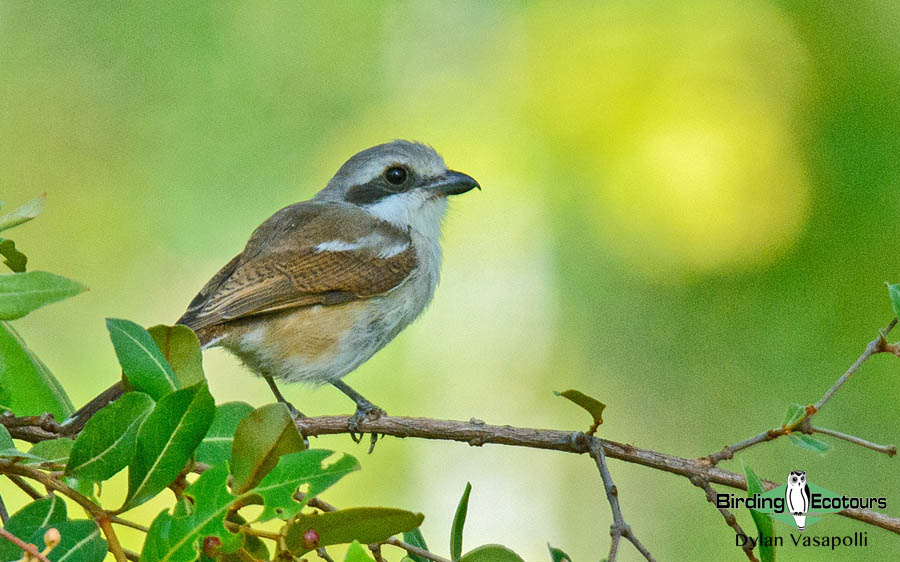
Day 8. Transfer to the Viphya Plateau
We will have a final morning available to spend in the rich miombo woodlands of Dzalanyama, searching for any of the specials we may still be needing, before we venture northwards. Our destination will be the Viphya Plateau (roughly five hours away), which provides a convenient stop-over point to break our drive to the north of the country. We will likely make a few birding stops en-route, most notably at wetlands where we’ll search for the likes of Lesser Jacana, African Pygmy Goose and White-backed Duck. We anticipate arriving in the mid-afternoon, from where we’ll check into our comfortable lodge, before undertaking our afternoon birding excursion. To a degree, our birding here will depend on what species we have seen, and missed, so far on the trip. Miombo woodlands here host species such as Whyte’s Barbet and African Spotted Creeper, and may serve as a good backup site. The bulk of our time however, will likely be spent in the old pine forests and remnant montane forest pockets that remain – where we’ll try for the likes of Olive Woodpecker, African Broadbill, Fülleborn’s Boubou, Black-browed Greenbul and Chapin’s Apalis.
Overnight: Luwawa Forest Lodge
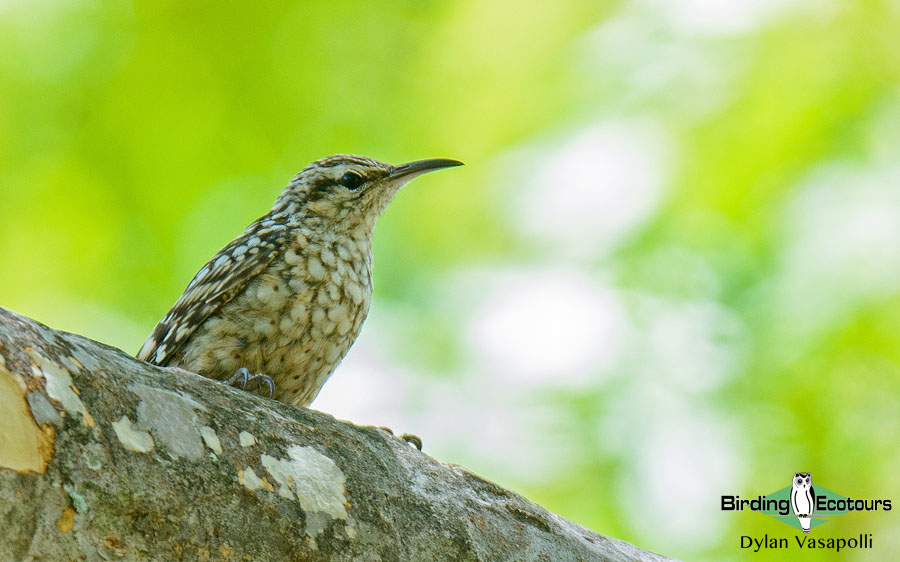
Day 9. Transfer to Vwaza Marsh Wildlife Reserve
We have the full morning available for us to continue birding around the Viphya Plateau. In addition to the species mentioned yesterday (Day 8), we will likely also focus some time on the wetlands, the open grassy areas and the lodge gardens. Species we’ll be trying for include the difficult-to-see Red-chested Flufftail and African Rail, along with Moustached Grass Warbler, Trilling Cisticola, Bronzy Sunbird, Bertram’s Weaver and Yellow-bellied Waxbill, amongst others.
Following our morning birding, we’ll continue our transfer northwards, this time to the Vwaza Marsh Wildlife Reserve, and surrounds. We anticipate arriving in the early afternoon (roughly three-hour drive), from where we’ll check in at our rustic, yet comfortable, lodge, on the outskirts of Rhumphi. Our time in the Vwaza Marsh area will be dedicated to, primarily, finding two species – the unique Babbling Starling and Chestnut-backed Sparrow-Weaver. These are both localized species that are very difficult elsewhere in their range and this region is one of the best localities for finding both of these birds. They occur in the rolling hills, dominated with miombo woodlands. We will have our first attempt at trying to find these species this afternoon – which usually involves walking through the woodlands, listening for bird parties – which both birds frequently attend. Our time in these miombo woodlands will naturally produce many other species – most of which we should have seen earlier in the Dzalanyama Forest Reserve (see Days 6 – 7), but this serves as a good backup site for many of those species. In particular, the miombo woodlands here are good for the likes of Miombo Pied Barbet, Miombo and Rufous-bellied Tits, Böhm’s Flycatcher and Miombo Rock Thrush – should we have missed any of these species.
Overnight: Matunkha Safari Lodge, Rhumphi (or similar).
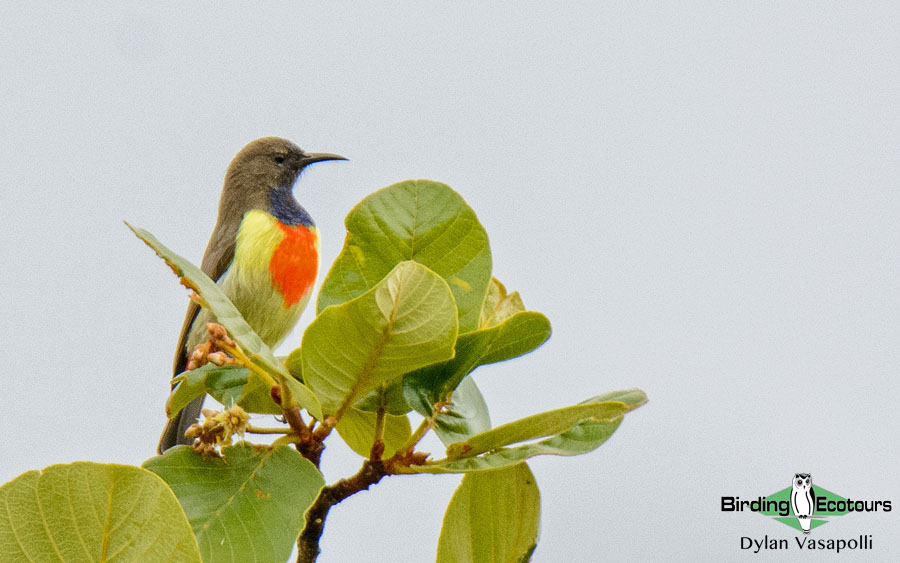
Days 10 – 12. Transfer to Nyika National Park
We will be able to spend the full morning of Day 10 searching the miombo woodlands around Vwaza Marsh for our two primary targets – Babbling Starling and Chestnut-backed Sparrow-Weaver, if still required. Following which, we’ll transfer to the nearby Nyika National Park, where we will spend the next three nights. This large reserve is one of Malawi’s premier reserves and attractions and will be one of the main highlights of the trip! We will base ourselves at the very comfortable Chelinda Lodge, which is stunningly set in the high montane grasslands atop the Nyika plateau with commanding views of the surroundings.
The birding in this reserve is nothing short of outstanding, and our time will be spent birding various sites in the different habitats here. The lower slopes of the Nyika plateau, such as near the entrance gate hold some excellent, and stunning miombo woodlands. Although we should have seen almost all of the miombo specials by this point on the trip, Nyika can also prove to be a reliable backup for tricky species such as Yellow-bellied Hyliota and Anchieta’s Sunbird. Additionally, these woodlands are also reliable for other species we’re only likely to see here such as Trilling Cisticola, White-winged Black Tit, Collared Flycatcher, Tree Pipit and Eastern Miombo Sunbird. Arguably our most important target here is the scarce Black-backed Barbet. As we near the top of the plateau, the miombo gradually begins changing and thinning out. Open areas with some rank growth will be searched for Red-winged Prinia and Marsh Tchagra, while the open woodlands here also host Brown Parisoma, Green-headed Sunbird and Brown-headed Apalis. Eventually, we emerge onto the top of the plateau, where rolling grasslands are dominant with the odd pocket of montane forest.
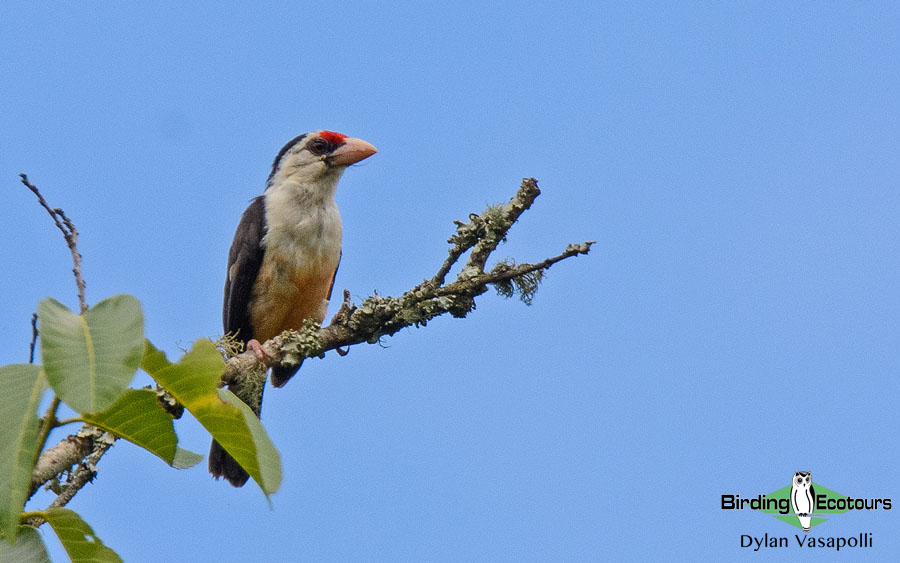
The grasslands support a number of specials that we’ll be targeting; large Denham’s Bustards are usually conspicuous, while the endemic subspecies of Red-winged Francolin play hide and seek in the grass. Localized Black-lored and Churring Cisticolas are common, as are Montane Widowbirds as they display over the grasslands. Mountain Yellow Warbler, Cinnamon Bracken Warbler, Whyte’s Double-collared Sunbird, Baglafecht Weaver, Yellow-crowned Canary and the scarce Yellow-browed Seedeater are specialists of the denser areas with rank growth, often lining the streams. All the while, good numbers of the stunning Blue Swallow flit over the grasslands, with smaller numbers of Angola Swallow. Stands of proteas support small populations of the prized Scarlet-tufted Sunbird, often alongside Malachite and Bronzy Sunbirds. We’ll search for Montane Nightjar after dark in these areas. The dams and wetlands up here typically don’t support a wide range of birds, but this can be a good area for Red-chested Flufftail. While raptors are not at their most abundant here, numbers of the elegant Pallid Harrier frequent the grasslands, and we should also keep an eye out for the likes of Rufous-breasted Sparrowhawk, Western Marsh Harrier and Augur Buzzard.
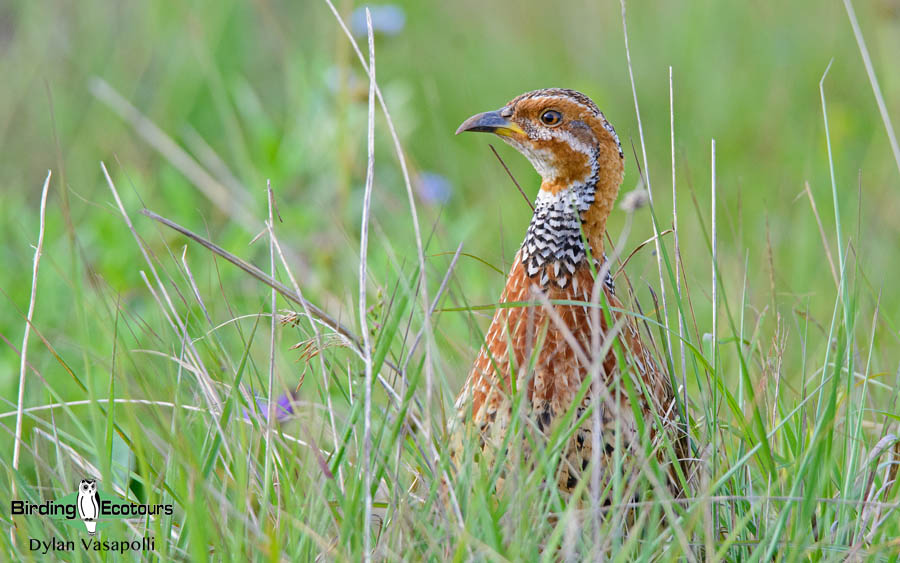
The forests here also hold a number of target birds, and we’ll need to spend some time in various forest patches to give us chances at finding all of the specials. Some of the more frequently encountered species include Schalow’s Turaco, Moustached Tinkerbird, Fülleborn’s Boubou, Black-browed Greenbul, Waller’s Starling and Cape Robin-Chat. In between these, we’ll be on the lookout for the prized Bar-tailed Trogon, Sharpe’s Greenbul, African Hill Babbler, Chapin’s Apalis, Abyssinian Thrush (here at the southern limit of its range), Slender-billed Starling and the secretive duo of White-chested Alethe and Olive-flanked Ground Robin. We will also undertake a special trip to search for the localized Sharpe’s Akalat. The forest edges can also prove to be birdy areas, and should give us additional species such as White-eyed Slaty Flycatcher and the stunning White-headed Saw-wing. Although this is a national park, the reserve does not support a vast contingent of megafauna. We’re likely to enjoy the distinctive races of Eland and Plains Zebra found here, along with the scarce Roan Antelope in the grasslands. Leopard do occur in the grasslands as well, but we’ll need a great deal of luck to find one. African Elephant do persist in the woodlands and forests, but are rarely seen.
Overnight: Chelinda Lodge, Nyika National Park
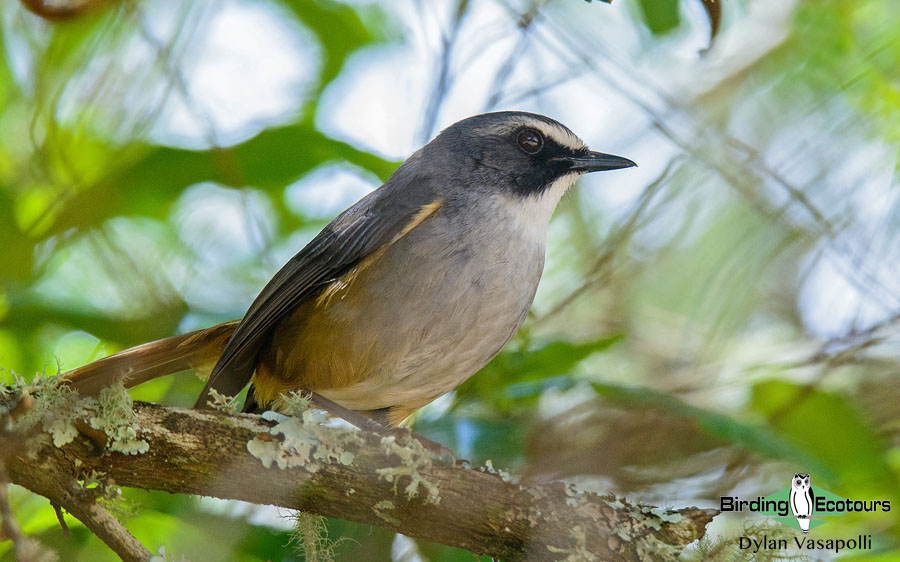
Day 13. Transfer to Lake Malawi
We have a final morning available for us to use tracking down any of the above-mentioned species that may still be eluding us. Alternatively, we can also spend some time in the miombo woodlands near Vwaza Marsh if we still require the likes of Babbling Starling. Following which, we’ll transfer to the idyllic shores of Lake Malawi (roughly four hours) near Chintheche. Our primary goal here is to visit the small patches of lowland forest that remain – which support the scarce East Coast Akalat. This is a shy robin, and can be difficult to see, but with enough time and effort, we should get good views. While we’re searching for the akalat, we’ll also be keeping our eyes open for species such as Green Malkoha, Narina Trogon, Green-backed Woodpecker, Blue-mantled Crested Flycatcher, Eastern Nicator and Red-capped Robin-Chat, amongst others.
Overnight Makuzi Beach Lodge, Chintheche
Day 14. Transfer to Lilongwe
We have the full morning available to us, to either continue searching for East Coast Akalat in the nearby lowland forests, or for us to explore some of the other habitats in the area – which include a mix of wetlands and woodlands. Aside from the species mentioned above (Day 13), we’re also likely to find species such as Purple-crested Turaco, Blue-spotted Wood Dove, African Barred Owlet, Black-throated Wattle-eye and Purple-banded Sunbird. Eastern Golden Weaver nest in the area and are usually in evidence. Various excursions on Lake Malawi (such as snorkeling) can be arranged at your own cost (but please note you would need to opt out of the birding excursions in their place). Following a good morning, we will transfer back to the capital, Lilongwe, in the afternoon (roughly five hours), where we should arrive in the late afternoon. We will have our final group dinner together, reminiscing about all the many excellent birds and wildlife encounters this trip would have delivered.
Overnight: Kumbali Country Lodge, Lilongwe
Day 15. Departure
Today is set aside as a departure day – and you’re welcome to leave at your leisure. The bulk of the flights usually depart in the late morning/early afternoon period, and we’re likely to be able to get some final birding in this morning. We can either spend our time birding the expansive grounds of our lodge for a wide range of species (see Day 1/2). Should we be feeling adventurous, we can try and visit some nearby wetland areas – and although they’re likely to be dry at this time of the year – they should still support sought-after species such as Rosy-throated Longclaw and even Locust Finch. Fischer’s Sparrow-Lark move in when conditions are dry and can usually be found as well. This tour will officially end at midday at the Lilongwe International Airport.
Please note that the itinerary cannot be guaranteed as it is only a rough guide and can be changed (usually slightly) due to factors such as availability of accommodation, updated information on the state of accommodation, roads, or birding sites, the discretion of the guides and other factors. In addition, we sometimes have to use a different international guide from the one advertised due to tour scheduling.
Download Itinerary